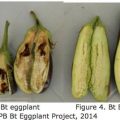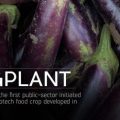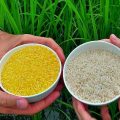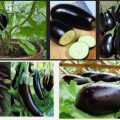The world’s pioneering organically-grown eggplant has been produced by Filipino breeders, ushering in a new agriculture age of nature-friendly, biodiversity-enhancing, and pesticide-free vegetable production.
Breeders at the Institute of Plant Breeding (IPB) have proven in the fields that it is possible to produce an eggplant that will omit use of harmful insecticide spray.
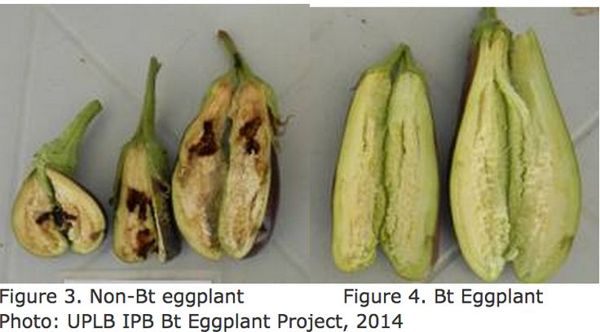
Abstinence in spray is particularly effective even while fighting the lepidopteran eggplant pest fruit and shoot borer (FSB)—a highly destructive pest that can wipe out as much as 100% of a harvest.
It is now achievable through the use of Bt– Bacillus thuringiensis — technology.
The single most important benefit of Bt eggplant is it protects human health – first, that of farmers and also of consumers – who no longer have to ingest toxin-laden vegetable.
Yet, equally important, Bt eggplant can be grown without any adverse impact on the environment. Non-spraying will save the environment from persistent pollutants.
Bt eggplant can even enhance biodiversity as beneficial insects—bees, spiders, beetles– will continue to thrive while growing it.
A first study ever evaluating the impact of Bt eggplant growing on biodiversity has been released by the University of the Philippines Los Banos (UPLB).
It was published in a peer-reviewed journal– the Public Library of Science or PLOS.
It showed numerous insects can flourish while Bt eggplant grows.
An abundance of these herbivores (plant-eating animal) were found– Bemisia tabaci (silverleaf whitefly), Amrasca biguttula (Indian cotton jassid), Solenopsis geminata (fire ant), Tettigonidae (bush crickets or long-horned grasshoppers), and Phycita sp. (Lepidoptera).
Predators found were Araneae (spiders), Coccinellidae (small beetles, ladybird), Campylomma sp., (silent leaf runner cricket), and Formicidae (ants).
These are the parasitoids and pollinators– Hymenoptera (sawflies,wasps, bees, ants), Ichneumonid wasp, Xylocopa sp (carpenter bee), and Apis sp. (European honey bee).
“Our data document species abundance, diversity and community dynamics in composition and structure of canopy-dwelling arthropods and soil micro-fauna in Bt and non-Bt eggplants,” reported scientists led by Manuel V. Navasero of the National Crop Protection Center-UPLB.
The presence of beneficial insects in Bt eggplant fields has become of interest to scientists, curious that the technology may have an adverse impact on biodiversity.
Insects traditionally have beneficial biodiversity functions– pollination (in the reproduction or flowering of plants), decomposition (degrading materials to turn for other functions such as fertilizers), and biological control (against pests in growing plants).
While allowing beneficial insects to prosper, Bt eggplant may be grown without insecticide spray against FSB. A related study showed nearly zero damage on non-sprayed Bt eggplants.
“Under such severe pest pressure, the Bt eggplant lines showed less than 1% FSB shoot damage, less than 2%, fruit damage and fewer FSB larvae at less than 11 larva per plot per harvest,” according to IPB breeders led by Desiree M. Hautea.
Contrastingly, the non-Bt eggplant suffered up to 46.6% shoot damage.
In the past, researchers have studied the impact of Bt technologies (cotton and corn) on non-target organisms especially non-target arthropods (NTA).
Arthropods are invertebrate animals with exoskeleton – insects, arachnids, crustaceans.
It is because Bt technology employs the insertion of a protein called Cry1AC that when expressed in Bt eggplant causes death of the pest FSB when ingested.
It comes from the soil bacterium Bacillus thuringiensis known for a long time to be the insecticide targeted at eradicating FSB.
“Arthropod communities, except for the target pest species, would be largely unaffected by the cultivation of this new crop. If Bt eggplants had a negative impact, we would have expected lower species richness and evenness in comparison to non-Bt eggplants.”
With this finding, it is evident Bt eggplant can be the foundational component for controlling FSB under an Integrated Pest Management (IPM) system.
“It can dramatically reduce dependence on conventional insecticides,” they said. Other team members in the study are Randolph N. Candano, Randy A.Hautea of the International Service for the Acquisition of Agri-Biotech Applications. Guest scientists are Frank a. Shotkoski and Anthony M. Shelton of Cornell University.
The development of Bt eggplant introduces the world to a new age in agriculture, potentially leading to the end of the use of insecticides.
The sad fact about insecticides is most of these are of broad-spectrum, meaning while they target only certain insect pests, their spraying spread out to non-target beneficial insects, killing these and contaminating the environment.
Contamination often leads to “pest resurgence, outbreaks of secondary pests, risk of off-farm movement of pesticides and environmental contamination.”
There are other controls recommended against FSB. First, the use of resistant plant varieties. But the development of plant varieties through conventional means has not been successful.
Biological system is also a control—the use of sex pheromones for trapping adults and disrupting mating of the lepidopteran pest.
There are cultural controls such as removing infested plant parts.
But farmers find these laborious and costly.
Thus, they have resorted to heavy insecticide spraying. Some farmers spray their eggplant 72 times during a 180-day eggplant season.
The success of the development of Bt technology in eliminating crop pests have so far led to planting of Bt crops (corn, cotton) on 83.7 million hectares globally as of 2015.
“Broad-spectrum insecticides including profenofos, triazophos, chlorpyrifos, cypermethrin, and malathion are often used in eggplant production. Such an insecticide-dependent strategy to control FSB poses both environmental and health concerns,” said Navasero.
“Use of genetic engineering to develop insect-resistant plants offers a solution to the often limited availability of highly insect-resistant germplasm.”
Farmers have expressed excitement in growing Bt eggplant. It will increase, marketable yield and cut production costs.
“Consumers would have an adequate supply of safer eggplant at a lower price. Bt eggplant presents a more efficacious, environmentally benign and profitable alternative to the current practice of intense use of chemical insecticides.”
The eggplant trials were conducted through three cropping seasons from March 2010 to October 2012 in normally pest-infested eggplant fields in Barangays Paitan and Sta. Maria in Pangasinan.
This is the site for Philippines’ largest eggplant producer accounting for around 30% of annual output of 200,000 metric tons yearly.
Both the Bt eggplant and non-Bt eggplant plants were grown 100% organic—no insecticide sprays against FSB.
However, in order to manage plant health, they did use other sprays under very judicious circumstances — highly selective insecticides *thiamethoxam for leafhopper and whitefly and sulphur for mites).
For the weeds, manual weeding was done.
A total of 91 taxa were observed in both the Bt and non-Bt eggplant fields.
“No significant differences in the seasonal mean abundance were detected in 81.3% (84/91) of the total NTAs observed between Bt and non-Bt eggplants.”
While there were significant differences observed in some Hemipterans (true bugs—cicadas, aphids, planthoppers, leafhoppers, shield bugs), the differences were observed only in one or two weeks out of the 5 to 17-week sampling periods each season.
Among Hemipterans found are jumping plant bug (Halticus minutus), leafhoppers (Amrasca biguttula), mirid bugs (Campylomma sp., Cyrtopeltis sp.), whitefly (Bemisia tabaci)), non-target lepidopterans (leaf folder (Homona coffearia), lepidopteran leafminer (Phycita sp.), semilooper (Chrysodeixis eriosoma), tomato fruitworm (Helicoverpa armigera), and coccinelids (Coccinelidae).
“Among the herbivores whiteflies and leafhoppers were the most abundant in all three trials and spiders and coccinelids were the most abundant among the predators. Among the parasitoids and pollinators, an ichneumonid wasp (Ichneumonidae) and honeybee (Apis sp.) were common in trials 1 and 2, while a cutworm parasitoid (Snellenius manilae) and honeybee (Apis sp.) were common in trials 2 and 3”
For the non target arthropods were lepidopteran leafminer (Phycita sp), leafhopper (A. biguttula), whitefly (B. tabaci), red fire ant (S. geminata), Phaneroptera sp., tomato fruit worm (H. armigera), mayfly (Ephemenoptera), semilooper (C. eriosoma), field cockroach (Blatellidae),coccinelids (Coccinelidae),Campylomma sp., latridiid (Latridiidae), cutworm(Spodopteralitura), spotted lady beetle (Epilachna spp.), winged ant (Formicidae) and spider (Araneae),dolichopodid fly(Dolichopodidae), and Monolepta sp. (Growth Publishing for Biotechnology Information Center).
For any questions or interview requests, please contact 0929-715-8669, 0917-102-6734 (Growth Publishing for Biotechnology Information Center)
